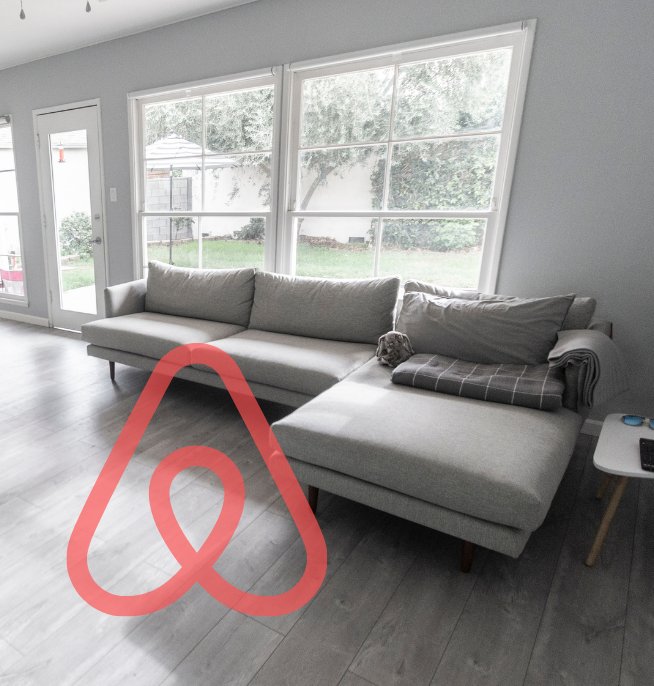It’s the most powerful tool that the hottest marketers on Earth are using. So we’re going to talk about this key pillar that you should be utilising and how to effectively leverage it in your business.
In this day and age, it isn’t fool-proof to rely on the likes of Facebook for your marketing list because what if Facebook changes the algorithm again? Or what if Google does another update and your website is nowhere to be found? Equally, what if Instagram goes down or there's another US election and LinkedIn is all over the place?
To avoid walking into this trap, it’s vital to own your list and employ email marketing in your business.
If you’ve been thinking about email marketing and are wondering where to start, you’ll definitely want to get your hands on this free Email Marketing Guide. It’s packed with value including a list of the 5 foundation blocks you need for growing your list and 10 ideas to get you adding value and growing your list.
There is a reason that the hottest marketers - I'm talking about the biggest brands, the biggest names in the business - use email marketing. McKinsey & Company commissioned a report on the topic and one of the main takeaways was that an email list has a 40 fold impact on your bottom line. For every marketing pound or dollar that you put into email marketing, you can get $40 or £40 in return. That's more than you would make through Facebook, Instagram, or any other marketing channel.
If you don't have email in your business right now, and you're not building this into your business as an incredible asset, it's a huge mistake.
Email delivers more leads than any other marketing channel. It's one of the top things for lead generation sales and it's absolutely critical for growth. Why? Because you can scale it up, you can do it really quickly and easily without a huge amount of cost investment. That is why a solid email marketing strategy is so crucial for your business, because the outcome can be so powerful.
So, how to start email marketing?
Well, I'm going to highlight a few things that will help.
Battle for the inbox
First of all, it's the battle for the inbox. You need to make sure that your emails get delivered. That requires you having a trusted and professional email marketing platform and I've done a comparison of the top four that I recommend. You've got platforms like MailChimp, which is always a great place to start.
Getting emails opened
The second thing is focusing on getting your emails opened. So you need to make sure that you're great at writing subject lines and that you're using personalisation.
I heard this once and it stuck with me: email marketing can exponentially move the needle for your sales. You need to think of it like a bank account, the more you invest into it, the bigger that asset grows.
So there's plenty of things that you need to work on, from your sender reputation and building up your sender score, to making sure that you keep your email list growing and keeping the list hot by constantly keeping in touch and getting your emails opened.
The first rule of email club
Want to know what the first rule of email club is? To make sure that your emails reflect you and your personality. You want it to make it feel like your readers are getting an email from you, something that you could have typed up on your phone. We’ve all heard the saying that people buy from people. So why not let people get to know you?
The final important thing is trust. This is probably the hardest thing to earn from your audience, but I think the way to do it is to be honest, obviously, to be open and add value. One of the biggest mistakes that I see is when brands are being sketchy or cagey about things like pricing or their processes. And if you're not open about those kinds of things, then people will wonder, what else are you not telling me about?
One of the biggest fears that I see business owners have is the dreaded unsubscribes. Don't take them personally. People who don't stick around aren't engaged and they're probably not going to buy from you. So bid them farewell and continue working on building your list and attracting your ideal audience.
Equally, if you have a website that you send traffic to, you should absolutely have some kind of sign up, such as a way for people to sign up to your newsletter. (Have you seen my sign up? It’s just down there in the footer ↓ Make sure you sign up to become a WWS insider).
What to increase your opt-in numbers?
There are three reasons that people will give up their email address and opt into your list.
You're offering something that they want. Something they really want, and they're happy to exchange their email address for that thing. Saving money is a big example because who doesn't want to snag a bargain or freebie?
You're going to provide them with massive value. Especially depending where they are on their buying ladder and on their journey to looking for a solution to a problem that they've got - a solution that you can provide. It might be a free guide, it might be a cheat sheet.
The biggest reason people sign up to a newsletter is because you didn't call it a newsletter. Please don't have a signup to your newsletter on your website without describing the genuine value that people are going to get. So think creatively about how you can engage people and get them to hand over their coveted email address.
So now that you've done those things and you've set up your email platform, it's time to make a genuine connection. Go and check out a brand called Black Rifle Coffee Company, and sign up to their list. You'll see how over time you feel like you really know Evan who's the founder of the business. It's absolutely phenomenal. And even if you're on his list for a while, it might be a while yet before you buy coffee from him. But you'll be telling everyone, you know about him and his stories.
I’ve given you quite a lot to think about in terms of know, like, trust, about how to get people to sign up and then about constantly ongoing and constantly investing in that list.
Put structure in your email marketing
There are a few structures that I can give you to help you with the initial blank page issue when you come to draft your email marketing. And the first thing is in the greeting. Be yourself, how would you normally start an email? Don't start off by trying to be something that you're not, because you're just going to make yourself feel uncomfortable before you've even gotten out of the gates. Go straight in with a hook, drive straight into your story. And opening with a question can be a great ice breaker. Once you've started with your hook, you can then transition to explain your story and you can explain why this matters.
I have previously talked about writing sales letters and you talk about who, what, how and why. That's also a great framework that you can use to transition into why this matters.
Once you've done that, and you've explained the hook, you can go into your pitch. You can now pivot to tell your users what you want them to go and do. It's not always a sale by the way. It could be a like on your Facebook page, but make sure that that rally cry is crystal clear in your email. That's how you get results.
It's always nice to reference back to your story and the reason that you're emailing them and just a nice little sign off. I like to end an email with a P.S. because I think it's a great way of dropping a little closer into emails, it’s also a great attention grabber. So go ahead and grab a Google doc or grab a Word doc and write it all out, let it flow. You can then read it out loud, edit and spell check once you’ve finished.
Another thing is whenever I talk to my team on Slack, or if I talk to friends and family on WhatsApp, I use GIFs a lot. So I use them in my email because that's me. So whatever is you, do that, because it'll make your email seem so much more authentic and it'll be so much more personal.
One last killer email marketing takeaway
I have one last tip for you: subject lines should be short and sweet. Four or five words max, because if you've ever looked at your inbox on your mobile device, you'll see how much space there is. You also want to make it seem like it's come from friends or family rather than something that’s clearly a sales email or whatever it is.
“Keep it short and sweet and you'll have success with your email marketing.”
So that's it. I really encourage you to go and find out more about email marketing if you're not using it in your business. And remember, I can help you unleash the power of email marketing right now by sending you the free Email Marketing Guide.
If you are using it in your business, when was the last time you sent out an email to your list? When was the last time you really tried to engage with people? You shouldn't let that investment just depreciate in your business bank!
PS. If you want to skip the guide and go straight to becoming an email marketing hero, check out my email marketing starter mini course to get you started.



